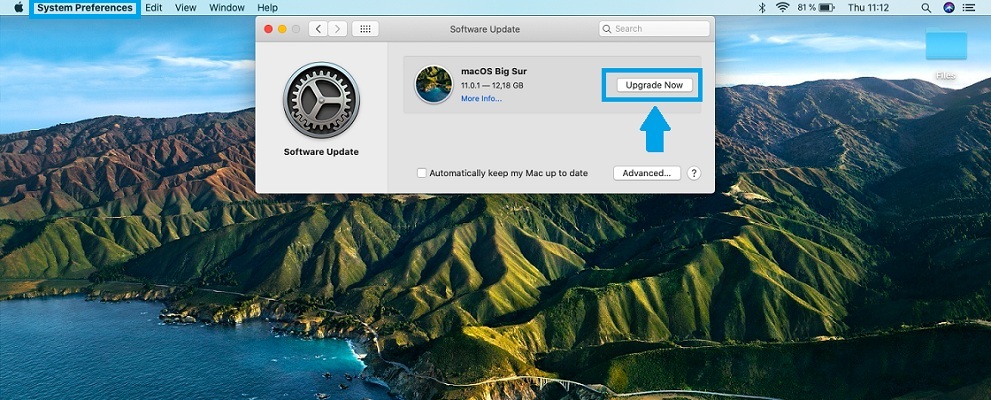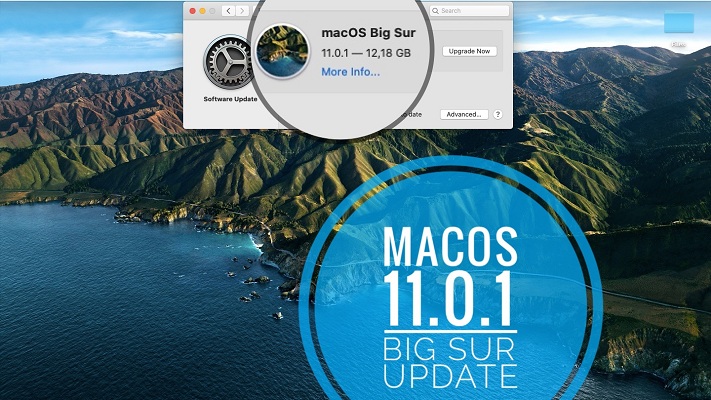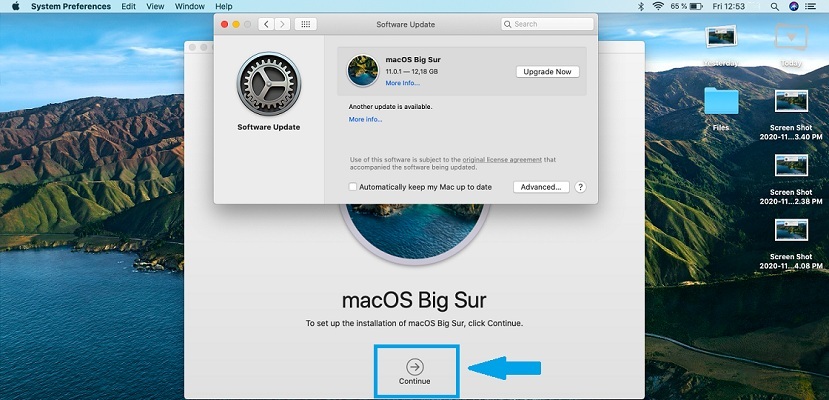How To Update To macOS 11.0.1 Big Sur (Tips, Duration & Fixes)
Last updated on November 19th, 2020 at 04:35 am
Posted in How To by Vlad on November 12, 2020Apple has released macOS Big Sur to the general public today, November 12, 2020. Although this is the first public version it’s already labeled macOS 11.0.1 and comes with build number 20B29.
macOS 11.0.1 Big Sur is available for any compatible Mac. It runs on Mac mini, Macbook Air and iMac as old as 2012. You can download and install it now from System Preferences.
How To Update To macOS Big Sur
Important: Before you go ahead with the macOS Big Sur update process, we recommend you to perform a full backup of your Mac with Time Machine. This way you will have a plan B, just in case something goes wrong. The backup is also useful if macOS Big Sur is too buggy for you and you want to downgrade to macOS Catalina.

- 1. Open System Preferences. Easiest way is to do it from the Dock.
- 2. Click on Software Update and wait for the macOS Big Sur update to be found.
Tip: If macOS 11.0.1 isn’t showing up, reboot your Mac and try again. - 3. Click Upgrade Now and be patient until the 12,18 GB large macOS Big Sur update file is download and prepared for installation.
Tip: If you’re prompted with the ‘An error occurred while installing the selected updates’ popup, read here what you can do to fix it! - 4. Click Continue to set up the installation of macOS Big Sur.
- 5. Review Apple’s Terms and click on Agree. Click Agree again, in the software license agreement popup.
- 6. Select the Disk that you want to install macOS Big Sur on and click Continue.
- 7. Be patient until macOS 11.0.1 is installed on your computer. This is practically the preparing update stage.
- 8. Click Restart to begin the final stage of the macOS Big Sur installation. Your computer might restart more than one time during this process.
Tip: Not enough free space available. Check out 8 ways to free up storage for macOS Big Sur.

Tip: When ready authenticate with your Mac’s password and follow the on-screen prompts to configure macOS Big Sur. You’re asked if you want to share your Mac analytics with Apple and more.
How Long Does It Take To Update?
Depending on your Mac model the macOS Big Sur update file is somewhere around 12,18 GB large.
- The first stage of the update process is highly influenced by the speed of your devices’ Wi-Fi connectivity. It can take anywhere from 10 to 45 minutes to download the update package.
- Next up, the update is prepared for installation. The duration of this step is influenced by the processing power of your Mac. The more resources it has the faster it will be. Expect an average time of about 15 minutes.
- The final step implies update verification and the actual installation. This should take another 15 – 25 minutes.
Total update time for upgrading from macOS Catalina to Big Sur should last anywhere between 40 and 65 minutes. How long did it take you? Use the comments section and let us know!
macOS Big Sur Changelog
Unlike iOS Software Updates, Apple hasn’t provided a detailed update log within the macOS Big Sur update window. All that you get is a ‘More info…’ link that when pressed opens the macOS Big Sur presentation page on Apple.com.
You can also check out the most important macOS Big Sur features, enhancements and changes in our detailed review.
macOS Big Sur Update Problems?
Do you have problems while attempting to update to macOS 11.0.1? Is the macOS Big Sur update not showing up, stuck on downloading or the process freezes during some other stage? Don’t hesitate to ask for help using the comments section available below. Please provide as many details as possible.
Tip: One of the common causes of macOS Big Sur update errors is not enough storage on your machine. Please check that your Mac has enough room to accommodate a new iOS update.
How To: Click the Apple logo, available in the top-left corner of the screen. Go for About This Mac and click on Storage (available in the horizontal menu). Each segment of the storage bar, represents an estimation of the space used by a category of files (System, Apps, Mail, Documents, iCloud Drive). Move your pointer over each segment to see what type of files are occupying the most storage. Delete those that you can afford to free up space. Get more details about how to free up storage space on Mac.
Did you manage to update to macOS Big Sur? Use the comments section and share your feedback? How long did it take? What’s your first impression about this new macOS generation?
Related: Did you know that macOS Big Sur brings battery usage history and time remaining estimates for your Mac?


